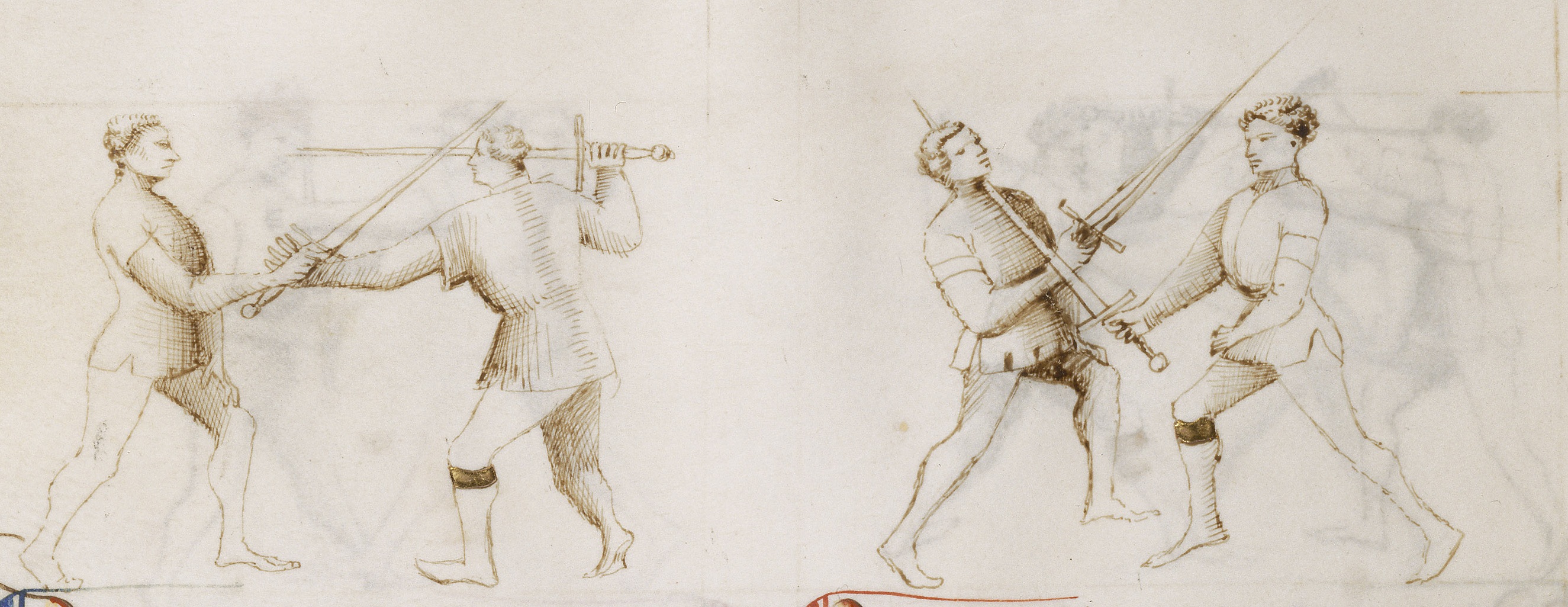
So, there was big discussion a few months ago on how to cut with a long sword.
Lots of words were said by a great many voices.
The gist of it was: Push-Pull Cutting model: good or bad?
The response I took away from the forums was that many people were not into it. They (the bulk of the forum people) preferred a Core Rotation Centered Model. I found that interesting.
Now, I teach a PPC model.
Slow Down Tiger. I never said the other model was wrong. Indeed, many strong sword arts rely on it. And yes, it cuts soft targets better. and the tip of the sword may be moving slightly faster. etc.
So why do I use the bad one? Well, in the context of 14th century fighting, with a 14th century sword (Oakshotte type XVa), it is the better way fighting. Big words you say? Maybe, but keep reading and I will back it up.

My actions in any fight need to be be purpose driven.
Those actions should be Mechanically efficient, and those mechanics must serve to drive all follow up actions.
The Old Man (Fiore) has some express advice on cutting for us, such as his art and his targeting suggestions. He is aiming to clip the neck, and thrust into unarmored parts, keeping the hand fairly low, projecting the weapon down or forward towrads the target.
OK, so, lets also look at the sword itself: a type XVa Long Sword.
40-50 inches long, 3-4 lbs in mass (101.6 -127 cm, 1.3-1.8 kg) on average, for antique pieces.
Very acute blade profile. fine point, large overall mass. Hmm. Popular during the hundred years war and warring Italy. A solid side arm for fighting against armor, and certainly sharp enough to do some real harm to those unlucky enough to not bear any armor.
While it does not have the cutting potential of its wider bladed cousins, what it does do rather well is chop. It chops into things, and then slices free as part of the recovery phase of the motion.
The chopping motion creates a jarring impact, and does so quickly. The forward traveling momentum means that any contact will work towards driving back an incoming action, leading to a strong over bind. Any wound created should be more than adequate to disable the target as well.

That brings us back to purpose.
The goal of my fight is to end the conflict with out being struck, or failing that, to survive.
Things that I need to do to make that happen:
- Put my edge to them, before they cut me.
- Close lines
- Offer sufficient impact to clear swords, lances, and wound my opponent.
Attacking on a wider line than show will leave lines un-closed as I enter. and cost me travel time, as well as set up less strong binds, should my opponent defend it.
In short, I feel this model is faster, equally accurate, and more effective tactically. I don't need more shearing power for the fight, the recovery offers more than enough.
I'll save my bigger cuts for the grass mats.
PS,
on the topic of purpose, every fight ends with a thrust, so part of my purpose in making a blow is to set that up. helps to guarantee the other person stays down.